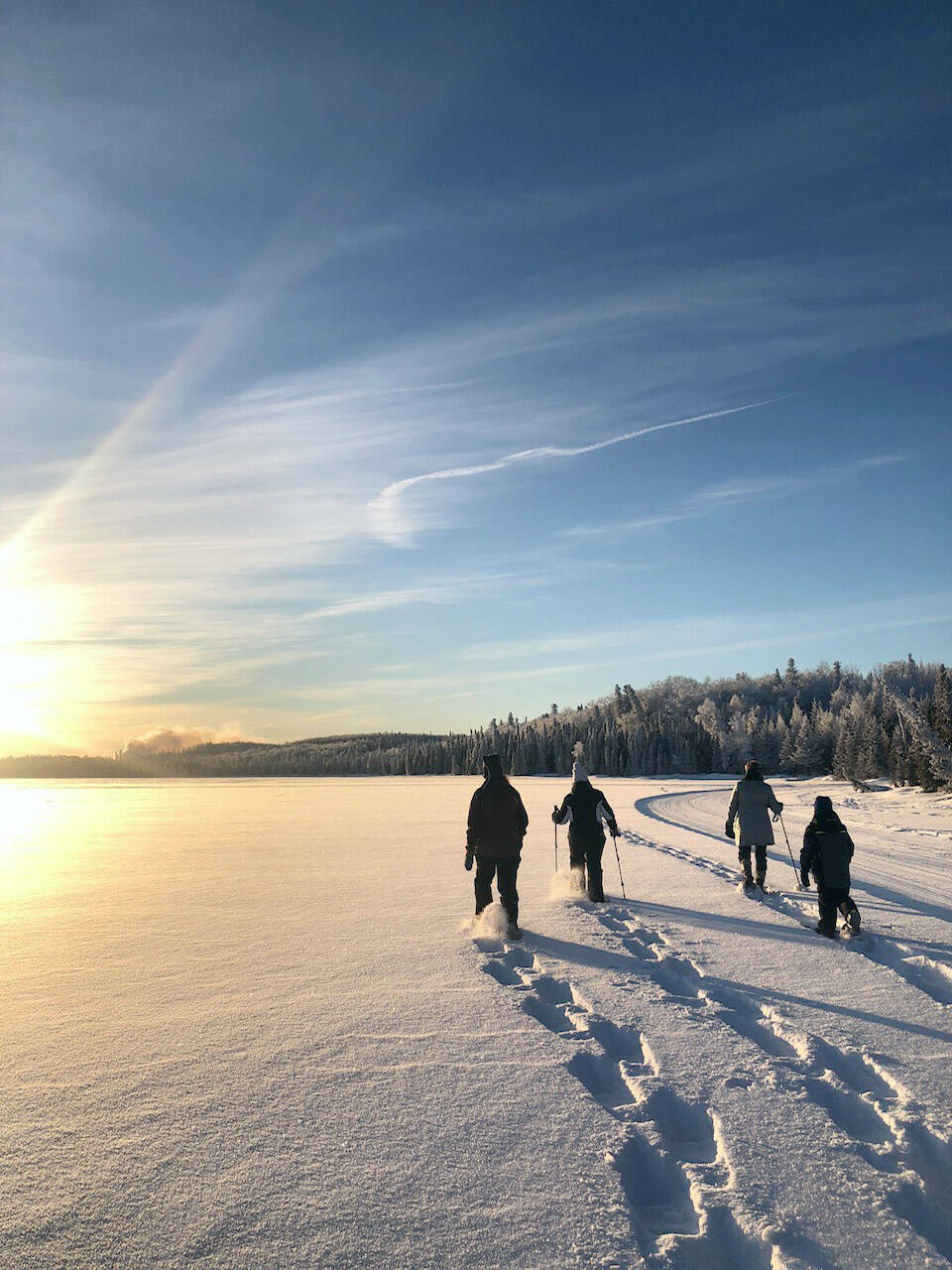Having grown up in New England, I am no stranger to cold winters, lots of snow and season-specific outdoor recreational opportunities. Imagine my surprise while making a recent visit to my hometown in western Massachusetts to find absolutely no snow on the ground.
It did make for easier hiking through the woods in search of geocaches. Still, I found myself missing snow and the quiet peacefulness it brings to an area while sparkling on the ground and in the trees.
As the Education Specialist for the Kenai National Wildlife Refuge, from mid-February until spring break, I will be busy facilitating second through sixth grade, two-to-three-hour snowshoe field trips with my new 40-week intern, Alyssa Ziwawi (also a New Englander).
Exploring the Keen-Eye trail with students talking about the historical use of snowshoes, winter animal adaptations, the “subnivean” zone and our potential impact on wildlife while recreating, these field trips are often the first snowshoe exposure students and their chaperones have.
Through different activities, they experience how larger feet (the snowshoes), like the paws on a lynx or snowshoe hare, distribute body weight and help you stay on top of the snow, making it easier and faster to travel (especially when we have a year with deeper snow).
In addition to getting school groups outside and connecting to nature, the refuge also offers guided snowshoe walks for adults and families to participate in (and the use of snowshoes to do so). If you are considering purchasing your own snowshoes, try a snowshoe excursion with us first.
Refuge volunteers lead 1.5-hour guided walks Wednesdays (starting at noon) and Saturdays (starting at 2 p.m.). These are usually more fitness-based and are for ages 12 and up. Family beginner snowshoe fun days will occur periodically throughout January to March for all ages wanting to try snowshoeing. Jan. 26 at 3 p.m. is the first event.
A winter highlight for me is guiding snowshoers under the full moon. We have one of those scheduled for Jan. 25 starting at 4:30 p.m. Many of these mentioned walks require preregistration. Please call the visitor center at 907-260-2820 to sign up or for more information. All guided refuge activities are free.
Groomed Nordic ski trails start at the Refuge visitor center and wind through the boreal forest to Headquarters Lake. The trails are available 24/7.
Other ways to play outdoors on the refuge include ice fishing, snowmachining, staying in a public-use cabin, backcountry skiing and dog mushing. Please get in touch with the refuge if you have questions about the rules and regulations for any of these activities.
To participate in snow-related outdoor activities, we, of course, need snow. There are three things needed for snow. Cold temperatures and moisture in the air (clouds) are the first two.
Do you know the third? All snowflakes need an impurity or “snowflake seed” at their center. These microscopic impurities, such as dust, bacteria, ice crystals, pollen and even volcanic ash, float around in the sky.
Let us hope the right conditions continue into March so that we keep the existing snow and add fresh layers to extend our outdoor winter fun.
Contact Ranger Michelle at 907-260-2839 or email michelle_ostrowski@fws.gov to schedule a snowshoe field trip for your class or to be added to the Kenai Refuge special events email list to receive our monthly activity flyer. You can find more information on the Refuge at http://kenai.fws.gov or http://www.facebook.com/kenainationalwildliferefuge. The Refuge Notebook is published twice a month and you can find past Refuge Notebook articles at https://www.fws.gov/kenai-refuge-notebook.

